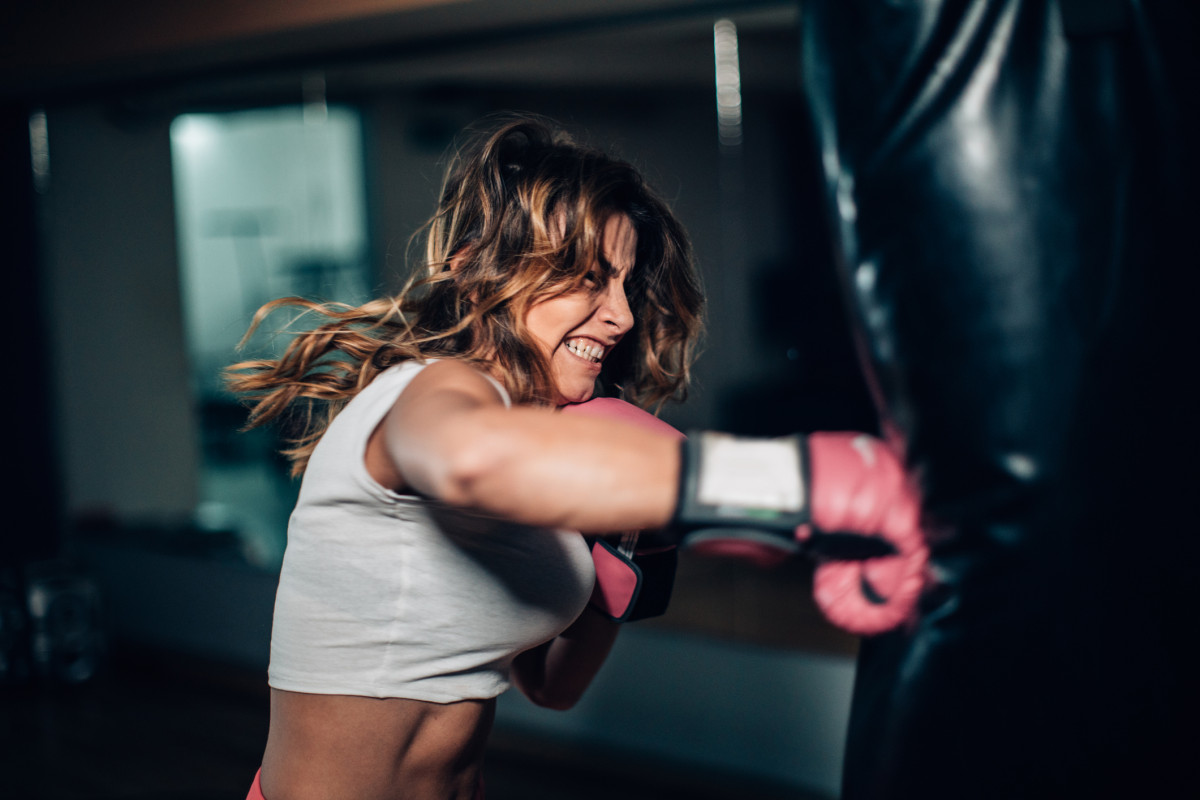
Whether training as a professional, as an amateur boxer or just for fitness, you transmit a considerable and repetitive force through your hand and wrist when boxing. By hitting with great force, or just repetitively, it can be sufficient to cause instability within the hand and compromise functional use of one or both hands.
Boxing injuries have been reported to occur both in training and competition and can lead to time off training or, more drastically, a recommended end to involvement in the sport. Prevention of these injuries is certainly possible and the incidence of injuries has been found to decrease with the implementation of such measures.
The most common hand and wrist injuries that have been found in boxers are: carpometacarpal instability, scapholunate instability, finger metacarpophalangeal (MCP), joint sprains, and thumb ulnar collateral ligament sprains. Minor acute injuries have been found to respond to conservative management such as rest and graded strengthening and stability exercises. However those that are chronic and poorly managed are prone to deteriorate into progressive joint instability, which is characterised by pain in and around the joints, development of irregular bony growths, joint subluxation and articular degeneration. Most commonly, in boxing, a bony mass known as a ‘carpal boss’ can develop where the base of the index and long fingers meet the wrist bones. Another common injury is that of the extensor tendon at the MCP joint becoming unstable and subluxing.
This is not meant to scare you from boxing – the benefits of this sport are numerous (beyond the fun and camaraderie you gain from punching pads and exercising with others). Decreasing the risk of injury is manageable and can hopefully add more ‘grunt to your punch’. Some principle preventive measures are:
- Skilled coaching
Anyone can throw a fist but you need to ask yourself an important question: Do I want to injure myself when striking? Input and supervision for correct alignment of the elbow and wrist at impact help to ensure safe shock absorption through a strong line of force. Starting with poor posture is dangerous to your wrist, as once tired, poor technique becomes worse and the wrist frequently starts to collapse under a decreased load. This has been highly associated with the development of a carpal boss.
If a coach is not available and you have good understanding of striking techniques – shadow boxing in front of a mirror for immediate feedback or video recording yourself sparring are helpful ways to analyse your current technique.
- Hand wraps
Hand wraps aim to support and stabilise structures in the hand and wrist on strike impact. In particular, wraps help to prevent splaying of the outer metacarpal bones; provide cushioning and protection for the MCP joints; and to protect and stabilise the wrist. There are various styles of wrapping techniques for different styles of boxing. Talking with your coach can help to clarify the most appropriate style for you.
- Gloves
Selecting the correct glove size is important and is relative to the type of training you are doing. Sparring and competition vs. heavy bag training vs. pad work can require varied ounces to the glove. Consulting your trainer is important to ensure that you have the correct equipment for your training.
- Physical Conditioning
Dynamic stretches have been shown to increase tendon flexibility and elasticity. A gentle warm up before stretching increases tissue temperature and facilitates stretching. A personal (cursed) favourite warm up, which incorporates dynamic wrist stretches is skipping. Beyond its cardiovascular workout, the small wrist motions provide a gentle warm up and stretch to the intricate network of tissues in the wrist.
Training alongside others can make you push yourself harder. Remember that they did not start at the level that you see them. Rate of load increase is important to consider and it varies between sports and individuals. No research has found to provide definite recommendations for boxing. A study by Gabbett in 2016 of rugby players did however find that when training loads were increased by less than 10%, risk of injury was under 10%. When training load was increased by 15% or more however, players’ injury risk escalated to between 21% and 49%. Hence, on commencement or return to boxing, building up training loads gradually can ensure longevity to engagement in the sport.
Care for your hands and wrists is important and easy when doing a high impact sports such as boxing. Taking the time to start with good technique can help keep your hands strong and safe for years of sweat and fun.
If you have already developed issues it can be helpful to visit a hand therapist for specific input to help with stability exercises and to avoid further deterioration.
Bibliography:
- Bahr, R., Clarsen, B. & Myklebust, G. (2017). Preventing injury. In P. Brukner, & K. Khan (Ed.), Brukner and khan’s clinical sports medicine 5th ed. Volume 1: Injuries (pp. ) Sydney, Australia: McGraw Hill Education.
- Drury, B. T., Lehman, T. P., & Rayan, G. (2017). Hand and wrist injuries in boxing and the martial arts. Hand Clinics, 33(1), 97-106.
- Gabbett T. J. (2016) The training-injury prevention paradox: Should athletes be training smarter and harder?British Journal of Sports Medicine 50(5), 273–80.
- Loosemore, L., Lightfoot, J., Gatt, I., Hayton, M., & Beardsley, C. (2017). Hand and wrist injuries in elite boxing: A longitudinal prospective study (2005-2012) of the Great Britain olympic boxing squad. Hand, 12(2): 181–187.
- Melone, C. P., Polatsch, D. B., Beldner, S. (2009). Disabling Hand Injuries in boxing: Boxer’s knuckles and traumatic carpal boss. Clinical Journal of Sports Medicine 28(4), 609-621.








